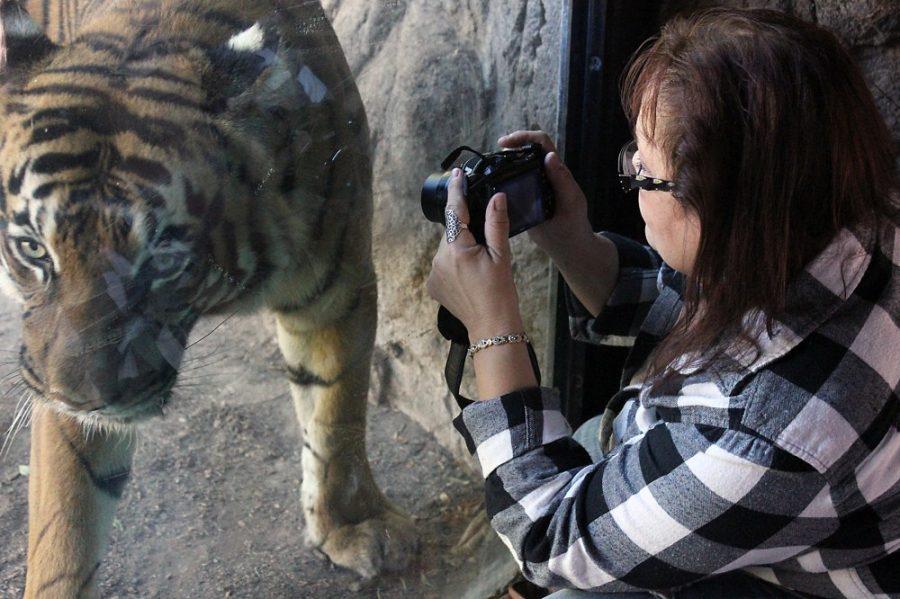Ashwin Naidu’s friends call him the Scat Man.
But the nickname isn’t a jab — he earned it after long nights in the lab studying tiger feces, which can tell him a lot about the species.
A graduate research associate in the UA School of Natural Resources and the Environment, Naidu has devoted most of his academic career to the conservation of tigers and other big cats in urban-surrounded environments. The Reid Park Zoo has helped to fund Naidu’s research.
The decline in the tiger population can be linked to habitat destruction, illegal livestock and poaching, according to Naidu. He said he feels that the threats facing tigers are “dead serious.”
It is not enough to just work to protect tiger populations. While tigers are an important species, the goal is to conserve the whole ecosystem. This will ensure that all the animals and plants are preserved, Naidu said.
Naidu conducts his research in several locations, including at the Kawal Wildlife Sanctuary in south central India.
He is investigating how many tigers are roaming in this urban-surrounded sanctuary.
The ability to monitor the number of tigers present in the wild is an important factor in the success of his conservation efforts, but it can be difficult to make an accurate estimate because tigers are solitary animals that live in forests.
In the past, Naidu had used paw prints to identify individual animals, but now he is able to use genetics. Genetic material has to come from either hair or scat.
“I use poop to study wildlife,” Naidu said. “It’s a gold mine.”
Genetic testing can be used not only to identify animals in the wild, but also where food and other products come from.
Myths surrounding the health benefits of consuming tiger parts and the black market have created a demand for tigers. Thanks to researchers using the same or similar methods as Naidu, people can now identify if products being sold contain tiger and other illegal animals meats, Naidu said.
“[Naidu] wants people to be aware that tigers need protection,” said Jennifer Stoddard, education coordinator at Reid Park Zoo. Naidu’s project was at the top of the list for funding this year.
“[Naidu] totally gets how a zoo can help to get his message out,” Stoddard said. Awareness of the dangers tigers and other animals face is the first step to help protect them, she added.
The Reid Park Zoo works to spread knowledge about conservation.
“We have a responsibility to educate our visitors,” said Jason Jacobs, administrator at Reid Park Zoo. Jacobs said he has seen tigers in the wild and feels that Naidu’s research is important to fund and share.
Naidu shares in the Reid Park Zoo’s philosophy.
“One of the most important tools is education,” Naidu said.









